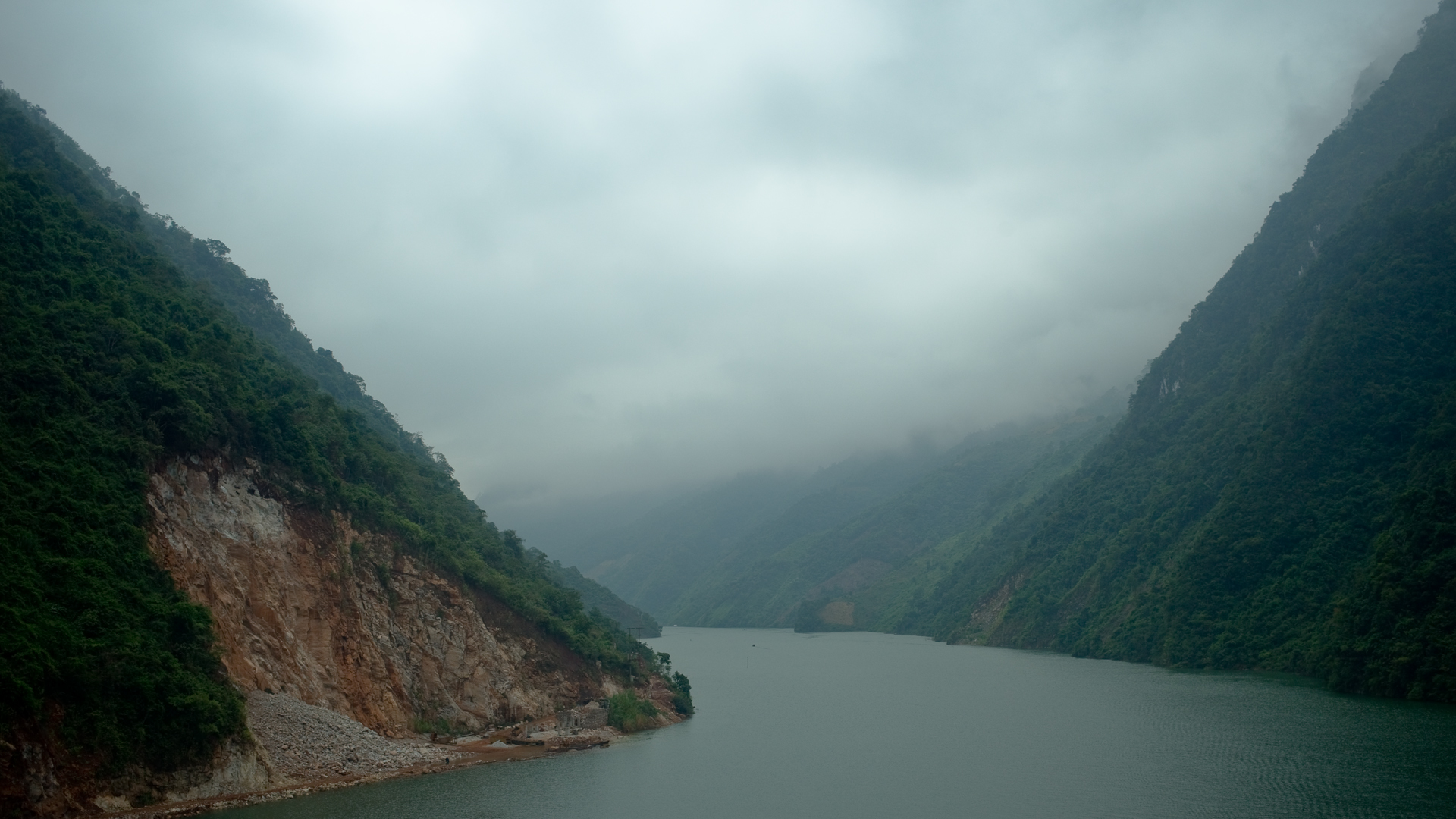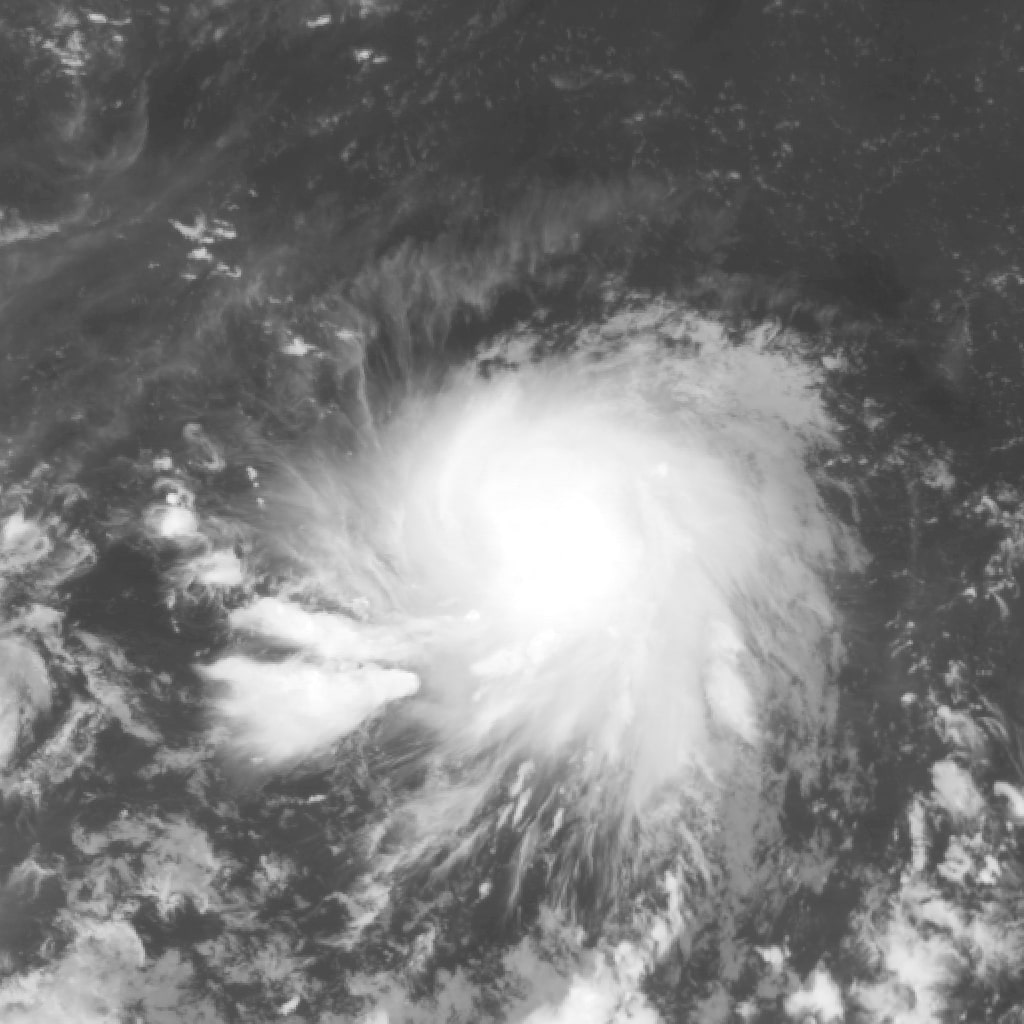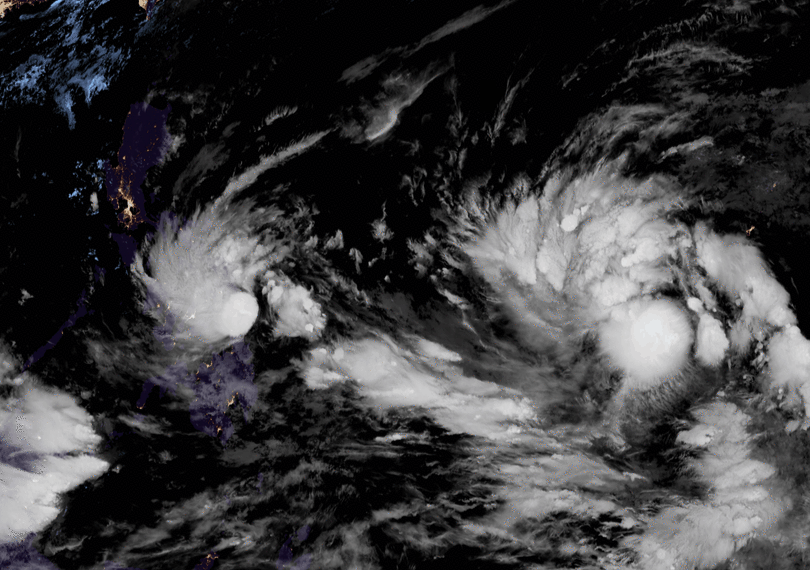|
Typhoon Songda
The name Songda has been used for four tropical cyclones in the Western North Pacific Ocean. The name was contributed by Vietnam, and is the name of the river Sông Đà in northwestern Vietnam. * Typhoon Songda (2004) (T0418, 22W, Nina) – a Category 4 typhoon which struck Japan, becoming the 5th costliest typhoon in record * Typhoon Songda (2011) (T1102, 04W, Chedeng) – Category 5 super typhoon, brushed the southern tip of Japan * Typhoon Songda (2016) (T1620, 23W) – Category 4 super typhoon, reached its peak intensity southeast of Japan; later struck the Pacific Northwest region of the United States and Canada as a powerful extratropical storm * Tropical Storm Songda (2022) The 2022 Pacific typhoon season was the third consecutive season to have below-average tropical cyclone activity, with twenty-five named storms, although it was more active than the previous seasons by named storm count. Ten became typhoons, a ... (T2205, 06W) – brought heavy rains to parts o ... [...More Info...] [...Related Items...] OR: [Wikipedia] [Google] [Baidu] |
Tropical Cyclone
A tropical cyclone is a rapidly rotating storm system characterized by a low-pressure center, a closed low-level atmospheric circulation, strong winds, and a spiral arrangement of thunderstorms that produce heavy rain and squalls. Depending on its location and strength, a tropical cyclone is referred to by different names, including hurricane (), typhoon (), tropical storm, cyclonic storm, tropical depression, or simply cyclone. A hurricane is a strong tropical cyclone that occurs in the Atlantic Ocean or northeastern Pacific Ocean, and a typhoon occurs in the northwestern Pacific Ocean. In the Indian Ocean, South Pacific, or (rarely) South Atlantic, comparable storms are referred to simply as "tropical cyclones", and such storms in the Indian Ocean can also be called "severe cyclonic storms". "Tropical" refers to the geographical origin of these systems, which form almost exclusively over tropical seas. "Cyclone" refers to their winds moving in a circle, whirling round ... [...More Info...] [...Related Items...] OR: [Wikipedia] [Google] [Baidu] |
Vietnam
Vietnam or Viet Nam ( vi, Việt Nam, ), officially the Socialist Republic of Vietnam,., group="n" is a country in Southeast Asia, at the eastern edge of mainland Southeast Asia, with an area of and population of 96 million, making it the world's sixteenth-most populous country. Vietnam borders China to the north, and Laos and Cambodia to the west. It shares maritime borders with Thailand through the Gulf of Thailand, and the Philippines, Indonesia, and Malaysia through the South China Sea. Its capital is Hanoi and its largest city is Ho Chi Minh City (commonly known as Saigon). Vietnam was inhabited by the Paleolithic age, with states established in the first millennium BC on the Red River Delta in modern-day northern Vietnam. The Han dynasty annexed Northern and Central Vietnam under Chinese rule from 111 BC, until the first dynasty emerged in 939. Successive monarchical dynasties absorbed Chinese influences through Confucianism and Buddhism, and expanded ... [...More Info...] [...Related Items...] OR: [Wikipedia] [Google] [Baidu] |
Black River (Asia)
The Black River, (, from the Tai language ''Da'' meaning "dark-brown") also known upstream as the Lixian River in China, is a river located in China and northwestern Vietnam. Course Its source is in Yunnan province of China. From China, the river's course passes through the Vietnamese provinces of Lai Châu (where it forms part of the border with Điện Biên province), Sơn La and Hòa Bình. The Black River is the most important tributary of the Red River, which it joins in Tam Nông district near Việt Trì in Phú Thọ province. It also forms part of the border between Phú Thọ province and Hanoi (previously the border with Hà Tây province). The river's total length is 910 km, with approximately 427 km in China and 527 km in Vietnam. Hydroelectric power The Black River yields substantial hydroelectric power. In China, seven dams are planned of which six, the Yayangshan Dam, Shimenkan Dam, Longma Dam, Jufudu Dam, Gelantan Dam, and Tukahe Dam, ... [...More Info...] [...Related Items...] OR: [Wikipedia] [Google] [Baidu] |
Typhoon Songda (2004)
Typhoon Songda, known in the Philippines as Typhoon Nina, was the fifth-costliest typhoon on record. The 18th named storm of the 2004 Pacific typhoon season, Songda developed on August 26 near the Marshall Islands. Following a path that Typhoon Chaba took nine days prior, Songda moved west-northwestward and strengthened quickly amid favorable conditions. Meteorological history Forming in a similar region as Typhoon Chaba did nine days earlier, Typhoon Songda originated on August 26 from an area of convection, or thunderstorms, east-northeast of Kwajalein in the Marshall Islands. At 06:00 UTC that day, the Japan Meteorological Agency (JMA) assessed that a tropical depression developed. The convection steadily organized and consolidated into rainbands around a well-developed circulation, aided by low wind shear. At 11:30 UTC on August 28, the Joint Typhoon Warning Center issued a tropical cyclone formation alert, and just 30 minutes later upgraded ... [...More Info...] [...Related Items...] OR: [Wikipedia] [Google] [Baidu] |
Typhoon Songda (2011)
Typhoon Songda, known in the Philippines as Super Typhoon Chedeng, was the strongest tropical cyclone worldwide in 2011. It caused moderate damage in the Philippines when it paralleled the country to the east as a Category 5–equivalent super typhoon; it later affected Taiwan and Japan as a weakening system. The fourth tropical depression, second named storm and the first super typhoon of the 2011 Pacific typhoon season, Songda formed from a non-tropical low that was embedded from the Intertropical Convergence Zone on May 17. An area of low-pressure subsequently formed and became organized for the JTWC to issue a TCFA on the system and the JMA to issue advisories, before both agencies declared it a tropical storm, earning the name ''Songda''. Under favorable conditions, Songda slowly intensified as it entered the Philippine Area of Responsibility, with the PAGASA naming it ''Chedeng'' on May 23. On the next day, the three agencies declared the system a typhoon before rapi ... [...More Info...] [...Related Items...] OR: [Wikipedia] [Google] [Baidu] |
Typhoon Songda (2016)
Typhoon Songda was the sixth most intense tropical cyclone of the Northwest Pacific Ocean in 2016. Also known as the Ides of October storm, it struck the Pacific Northwest region of the United States and Canada as a powerful extratropical cyclone. Songda was the twentieth named storm and the ninth typhoon of the annual typhoon season. The system developed into a tropical storm south of Minamitorishima on October 8 and strengthened into a typhoon on October 10. Songda reached its peak intensity southeast of Japan late on October 11 at an unusually high latitude, before it became extratropical on October 13. Meteorological history On October 2, the United States Central Pacific Hurricane Center started to monitor a weak trough of low pressure that had developed about to the southwest of Honolulu, Hawaii. Over the next day as the system moved towards the northwest, showers and thunderstorms gradually developed along the trough, but were showing little to no signs of organisatio ... [...More Info...] [...Related Items...] OR: [Wikipedia] [Google] [Baidu] |
Tropical Storm Songda (2022)
The 2022 Pacific typhoon season was the third consecutive season to have below-average tropical cyclone activity, with twenty-five named storms, although it was more active than the previous seasons by named storm count. Ten became typhoons, and three of those intensified into super typhoons. This low activity was caused by an unusually strong La Niña that had persisted from 2020. The season's first named storm, Malakas, developed on April 6, while the last named storm, Pakhar, dissipated on December 12. The season's first typhoon, Malakas, reached typhoon status on April 12. The season ran throughout 2022, though most tropical cyclones typically develop between May and October. Tropical storms Megi and Nalgae were responsible for more than half of the casualties, while typhoons Hinnamnor and Nanmadol both caused $1 billion in damages. The scope of this article is limited to the Pacific Ocean to the north of the equator between 100°E and 180th meridian. Within the nort ... [...More Info...] [...Related Items...] OR: [Wikipedia] [Google] [Baidu] |
Typhoon Aere (other)
The name Aere has been used to name four tropical cyclones in the northwestern Pacific Ocean. The name was contributed by the United States of America, and is the Marshallese word for 'storm'. * Typhoon Aere (2004) (T0417, 20W, Marce), category 2 typhoon that brought severe damage to Taiwan and Eastern China. * Tropical Storm Aere (2011) (T1101, 03W, Bebeng), struck the Philippines. * Severe Tropical Storm Aere (2016) (T1619, 22W, Julian), struck Central Vietnam as a tropical depression. * Tropical Storm Aere (2022) (T2204, 05W, Domeng), struck Japan Japan ( ja, 日本, or , and formally , ''Nihonkoku'') is an island country in East Asia. It is situated in the northwest Pacific Ocean, and is bordered on the west by the Sea of Japan, while extending from the Sea of Okhotsk in the north ... as a tropical depression. {{DEFAULTSORT:Aere Pacific typhoon set index articles ... [...More Info...] [...Related Items...] OR: [Wikipedia] [Google] [Baidu] |
Tropical Storm Trases
The 2022 Pacific typhoon season was the third consecutive season to have below-average tropical cyclone activity, with twenty-five named storms, although it was more active than the previous seasons by named storm count. Ten became typhoons, and three of those intensified into super typhoons. This low activity was caused by an unusually strong La Niña that had persisted from 2020. The season's first named storm, Malakas, developed on April 6, while the last named storm, Pakhar, dissipated on December 12. The season's first typhoon, Malakas, reached typhoon status on April 12. The season ran throughout 2022, though most tropical cyclones typically develop between May and October. Tropical storms Megi and Nalgae were responsible for more than half of the casualties, while typhoons Hinnamnor and Nanmadol both caused $1 billion in damages. The scope of this article is limited to the Pacific Ocean to the north of the equator between 100°E and 180th meridian. Within the no ... [...More Info...] [...Related Items...] OR: [Wikipedia] [Google] [Baidu] |




